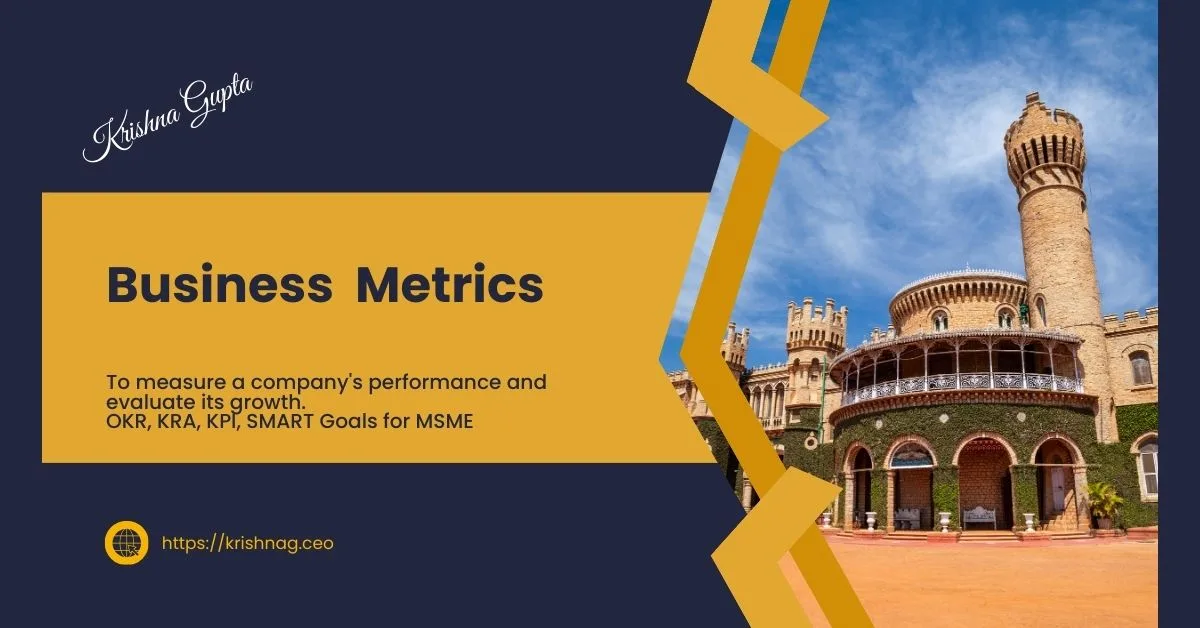Navigating the Goal-Setting Sea: Your Compass to OKRs, KRAs, KPIs, and SMART
OKR, KRA, KPI, and SMART are all goal-setting methodologies or frameworks. Still, they serve different purposes and work together in a complementary way to guide your strategic planning and track progress towards success. Here’s how they’re interconnected:
OKR (Objectives and Key Results):
- Objectives: Ambitious, qualitative statements that define what you want to achieve. They should be inspiring and stretch your team beyond their comfort zone.
- Key Results: Measurable outcomes that show progress towards the objective. They should be specific, time-bound, and achievable but still challenging.
KRAs (Key Result Areas):
- Focus areas within an OKR that break down the objective into smaller, actionable components. They help team members understand their contribution to the overall goal.
KPIs (Key Performance Indicators):
- Quantitative metrics that track progress towards individual KRs. They provide actionable data points to monitor performance and make adjustments as needed.
SMART Goals:
- A framework for specifying clear, concise, and achievable goals. SMART goals are:
- Specific: What do you want to achieve?
- Measurable: Establish how you will track progress.
- Attainable: Set ambitious but achievable goals.
- Relevant: Ensure your goals are in alignment with your overall objectives.
- Time-bound: Define a timeframe for achieving your goals.
Correlation:
- OKRs provide the big picture: They define your overall ambitions and desired outcomes.
- KRAs break down the OKRs: They translate the objectives into specific focus areas for different teams or individuals.
- KPIs track progress within KRAs: They provide measurable data points to assess performance and ensure you’re moving towards your objectives.
- SMART Goals ensure your KRAs are well-defined: They help create specific, actionable, and achievable milestones within your KRAs.
In simpler terms, OKRs are your ultimate destination, KRAs are the routes you take, KPIs are the road signs, and SMART goals ensure you’re using the right vehicle and staying on track.
By effectively utilising these interconnected frameworks, you can set clear goals, track progress efficiently, and achieve impactful results for your projects or strategies.
Setting goals is like plotting a course on the vast ocean of business: you need direction, markers along the way, and a well-equipped vessel. But with so many goal-setting frameworks, it can be hard to know which ones to use and how they work together. Enter the dynamic quartet of OKRs, KRAs, KPIs, and SMART goals – your trusted crew for steering your endeavours to success.
OKRs: Ambitious but inspiring, OKRs (Objectives and Key Results) chart your destination. They paint a picture of what you want to achieve – the Everest you aim to climb. The Objective sets the high-level ambition, like “Become the leading eco-friendly furniture brand in our region.”
KRAs: Think of KRAs (Key Result Areas) as the routes to your Everest. They break down the objective into tangible areas of focus. Imagine dividing your climb into base camp, camp 2, camp 3, and finally, the summit. Each KRA represents a crucial stage in your journey, like “Increase recycled wood usage in production by 30%” or “Achieve a 20% customer satisfaction rating on environmental practices.”
KPIs: Now comes the navigation: enter KPIs (Key Performance Indicators). The precise road signs tell you if you’re on track. Each KRA needs quantifiable metrics to measure progress. For example, “Reduce carbon footprint by 15% per unit produced” or “Secure partnerships with five major sustainable forestry suppliers.”
SMART Goals: Finally, SMART goals ensure your vessel – your specific actions – is seaworthy. They make sure your KRAs are well-defined and actionable. Instead of a vague “Increase recycled wood usage,” a SMART goal would be “Source 50% of wood used from certified recycled sources by Q3.”
The Symphony of Goal-Setting:
So, how do these frameworks work together? Imagine them as a symphony:
- OKRs set the melody: they establish the overall aspiration.
- KRAs break down the movements: they translate the melody into distinct sections.
- KPIs provide the rhythm: they keep the sections on track with measurable beats.
- SMART goals ensure the notes are played correctly: each beat is clear and actionable.
Using these frameworks in concert creates a comprehensive roadmap for success. OKRs provide the ambitious aim, KRAs break it down into achievable steps, KPIs monitor progress, and SMART goals ensure you’re taking the right actions.
Set Sail with Confidence:
Whether navigating a startup’s early voyage or steering a seasoned company to new heights, understanding the interplay of OKRs, KRAs, KPIs, and SMART goals empowers you to chart a course toward impactful results. Embrace these frameworks, set sail confidently, and watch your ambitions reach new horizons!
Ready to set your OKRs? Grab your compass and start crafting your roadmap to success!
